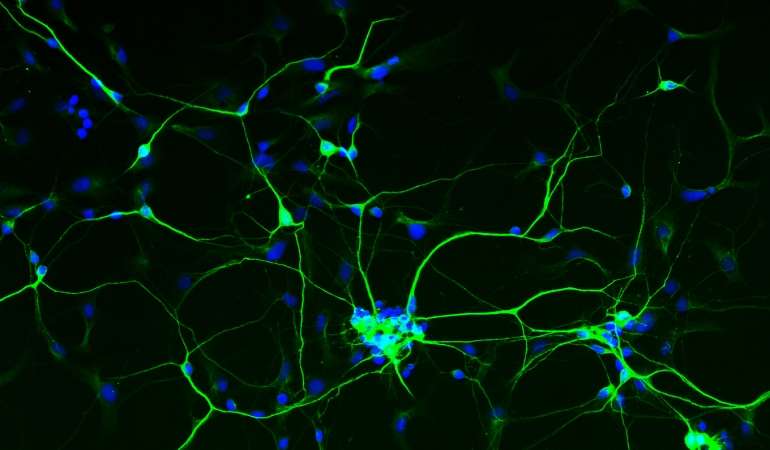Creating neurons from skin cells to understand autism

Studying brain disorders is complicated for many reasons, not the least being the ethics of obtaining living neurons. To overcome that obstacle, UC San Francisco postdoc Aditi Deshpande, PhD, is starting with skin cells.
Thanks to developments in stem cell technology, new information about the human brain is now being gleaned from a simple cheek swab or skin sample. This technology is key to the kind of progress Despande and researchers like her are making. It allows them to work with cells otherwise unobtainable – living brain cells that have the same genetics as the patients.
Deshpande begins with skin cells obtained from the Simons Foundation from volunteers whose DNA contains a specific deletion or duplication of one chromosome. She cultures these cells and then turns them into induced pluripotent stem cells – cells that have been coaxed back to their embryonic state and are able to become any other type of cell. From there, she reprograms them to become a specific type of neuron that's involved in attention and information processing.
Where the Deletion, Duplication Occurs
The deletion or duplication Deshpande is looking for stems from a 2008 finding by Lauren Weiss, PhD, an associate professor of neurology in the UCSF Department of Psychiatry and the UCSF Institute for Human Genetics.
Weiss discovered a 29-gene region of DNA on chromosome 16 that is associated with autism, seizures and other brain disorders. Normally, a person has two copies of the region – one on each copy of chromosome 16. In some of Deshpande's samples, the region is deleted from one chromosome, leaving one copy. In others, the region is duplicated, resulting in three copies. Subjects with only one copy of the region were more likely to have macrocephaly – an enlarged brain – than a typical subject, and those with three copies were more likely to have microcephaly – a smaller brain.
"What's really interesting," said Deshpande, "is that although these subjects seem to have opposite features in terms of brain size, we see a related effect, based on whether they have fewer or more copies of the region."
Some known models of autism show a connection between a neuron's growth or appearance and macrocephaly, she explained. "We wanted to know if the same thing is happening here."
Assessing Several Thousands of Neurons
To compare the effect of the mutation, Deshpande first stains the obtained skin cells so that she can visualize the neurons under a microscope. After staining, Deshpande used cell-counting software to assess several thousands of neurons from deletion and duplication samples and measure them against normal neurons. She found that the neurons missing the DNA region exhibited some differences compared to typical neurons.
Her next step in her research is to discern which of the region's 29 genes are involved in these differences.
The work is meticulous, but Deshpande doesn't mind. "I simply love looking at neurons," she said. "It really makes you appreciate the complexity of the brain."



















